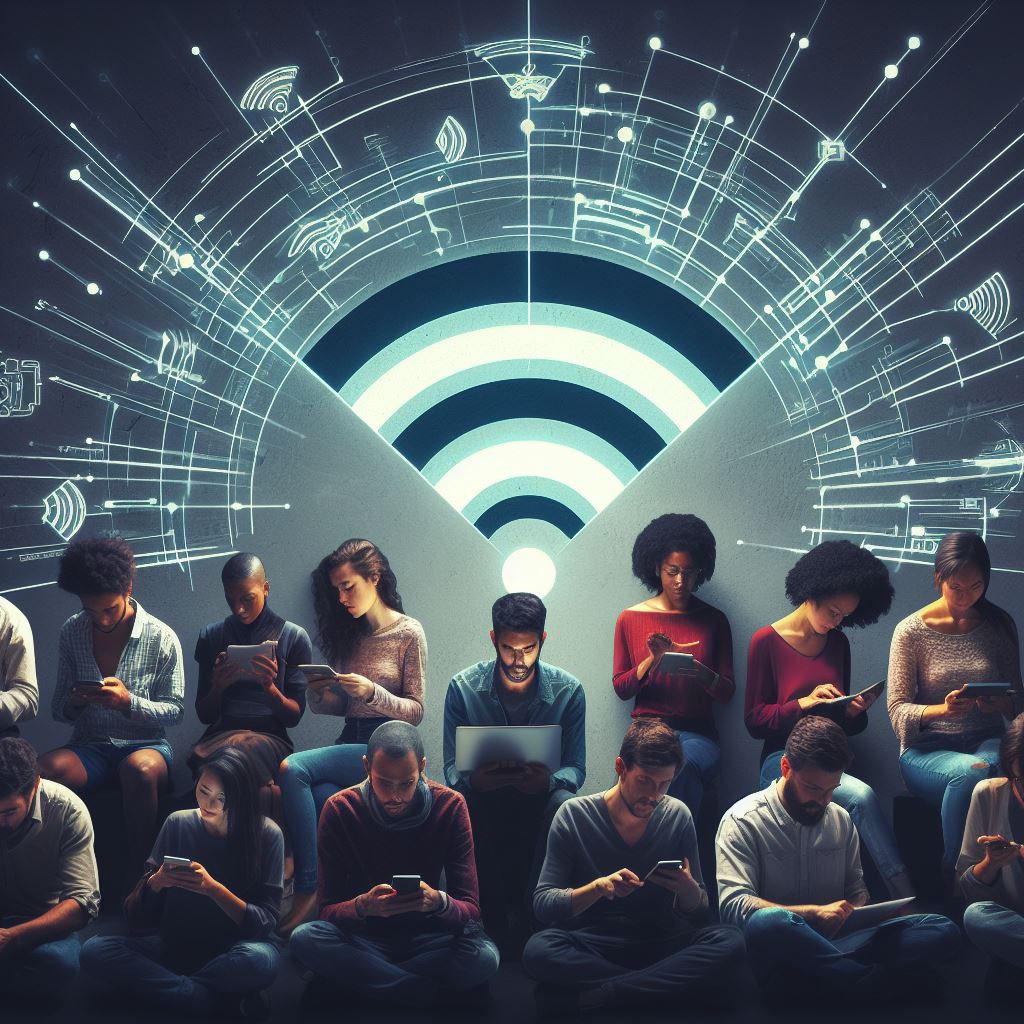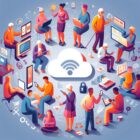Lifeline Assistance: Bridging the Internet Accessibility Gap

Do you struggle to access the internet due to financial constraints?
Lifeline Assistance is here to bridge the gap and ensure that internet accessibility is not a privilege but a right. This program offers support to low-income individuals, connecting them to the digital world and its countless opportunities.
In this article, we will explore how Lifeline Assistance works, who is eligible, and what the future holds for this vital service.
Get ready to discover a lifeline that can transform your online experience.
Key Takeaways
- Reliable internet access is essential for staying connected and accessing online services.
- Lifeline Assistance is a government program that provides affordable phone and internet services to low-income individuals and families.
- Lifeline Assistance bridges the affordability gap for low-income individuals by providing a monthly subsidy to offset the cost of internet service.
- The future of Lifeline Assistance includes the expansion of broadband services and potential improvements in coverage and affordability.
The Importance of Internet Accessibility
You need reliable internet access in today’s digital world to stay connected and access essential online services. From staying connected with family and friends through social media to accessing online banking, education, job opportunities, and healthcare services, the internet has become an integral part of our daily lives. Without internet access, you may find it challenging to keep up with the fast-paced nature of the modern world.
Reliable internet access enables you to communicate effortlessly, whether it’s through emails, video calls, or instant messaging platforms. It allows you to connect with loved ones who may be far away, fostering a sense of belonging and maintaining relationships. Additionally, the internet serves as a valuable resource for information and knowledge, providing access to a world of educational materials and online courses.
Moreover, the internet has revolutionized the way we handle financial transactions, with online banking and shopping becoming increasingly popular. It offers convenience, security, and the ability to manage our finances from the comfort of our own homes. Furthermore, internet access is crucial for job seekers, as many opportunities are advertised exclusively online.
What Is Lifeline Assistance
To understand what Lifeline Assistance is, it’s important to know that it’s a government program that aims to provide affordable phone and internet services to low-income individuals and families. Here are a few key points to help you grasp the concept:
- Eligibility: Lifeline Assistance is available to those who meet certain income criteria or participate in certain government assistance programs. These include Medicaid, Supplemental Nutrition Assistance Program (SNAP), Federal Public Housing Assistance (FPHA), and more.
- Services: The program offers a discount on monthly phone or internet bills, helping eligible individuals and families stay connected and access essential services such as job opportunities, healthcare information, and educational resources.
- Providers: Numerous service providers participate in Lifeline Assistance, including major telecommunications companies. This ensures that eligible individuals have a variety of options to choose from and can find a provider that suits their needs.
- Application Process: To enroll in the program, individuals need to complete an application and provide documentation to prove their eligibility. The process is straightforward and can often be done online or through mail.
Understanding what Lifeline Assistance is sets the stage for exploring how it helps low-income individuals. By bridging the affordability gap, this program plays a crucial role in promoting digital inclusion and empowering those who are economically disadvantaged.
How Lifeline Assistance Helps Low-Income Individuals
Bridging the affordability gap, Lifeline Assistance plays a crucial role in helping low-income individuals gain access to essential internet services.
For many low-income individuals, the cost of internet access is simply unaffordable. This lack of access can hinder their ability to apply for jobs, access educational resources, and participate fully in our increasingly digital society.
Lifeline Assistance aims to address this issue by providing eligible low-income individuals with a monthly subsidy to help offset the cost of internet service. This subsidy can make a significant difference in the lives of low-income individuals, as it allows them to connect with loved ones, access vital information, and pursue educational and employment opportunities.
Additionally, Lifeline Assistance providers often offer discounted or affordable internet plans, ensuring that low-income individuals have access to reliable and high-speed internet connections.
Eligibility Requirements for Lifeline Assistance
To determine if you’re eligible for Lifeline Assistance, certain requirements must be met. Here are the eligibility criteria you need to consider:
- Income: Your household income must be at or below 135% of the Federal Poverty Guidelines. The exact income limit may vary depending on your state.
- Participation in Assistance Programs: If you or a member of your household participates in certain federal assistance programs such as Medicaid, Supplemental Nutrition Assistance Program (SNAP), Federal Public Housing Assistance (FPHA), or Veterans Pension and Survivors Benefit, you may be eligible for Lifeline Assistance.
- Tribal-Specific Eligibility: If you reside on tribal lands, you may be eligible for additional benefits. In some cases, the income limit may be higher for individuals living on tribal lands.
- Proof of Eligibility: You’ll need to provide documentation to prove your eligibility for Lifeline Assistance. This may include proof of income, participation in assistance programs, or tribal membership.
Meeting these requirements is crucial to determine if you qualify for Lifeline Assistance. By ensuring you meet the eligibility criteria, you can bridge the accessibility gap and gain access to essential communication services.
The Future of Lifeline Assistance and Internet Accessibility
As technology continues to advance, Lifeline Assistance is evolving to ensure continued internet accessibility for eligible individuals. The future of Lifeline Assistance is promising, with potential improvements in both coverage and affordability.
One key aspect of the future of Lifeline Assistance is the expansion of broadband services. The Federal Communications Commission (FCC) has recognized the importance of broadband internet access and is working towards making it available to more low-income households. This means that Lifeline Assistance won’t only provide basic phone service but also include broadband services.
Additionally, the future of Lifeline Assistance may see an increase in the number of participating service providers. Currently, there are several companies that offer Lifeline Assistance, but the FCC is actively encouraging more providers to participate in the program. This will create more competition, leading to better services and more affordable options for eligible individuals.
Moreover, as technology continues to advance, the future of Lifeline Assistance may also involve the incorporation of new technologies such as 5G networks. These networks offer faster and more reliable internet connections, which would greatly benefit eligible individuals who rely on Lifeline Assistance.
Frequently Asked Questions
How Can Low-Income Individuals Apply for Lifeline Assistance?
You can apply for lifeline assistance if you are a low-income individual. The process is simple and can be done online or by mail. Make sure to provide the necessary documentation to support your eligibility.
What Are the Different Types of Internet Services Available Through Lifeline Assistance?
There are different types of internet services available through lifeline assistance. They offer affordable plans for low-income individuals, helping to bridge the accessibility gap and provide essential connectivity for daily needs.
Are There Any Limitations or Restrictions on the Usage of Lifeline Assistance Internet Services?
Yes, there are limitations and restrictions on the usage of Lifeline Assistance internet services. These limitations may include data caps, speed restrictions, and only being available in certain areas.
Can Lifeline Assistance Be Used for Mobile Internet Access?
Yes, you can use Lifeline Assistance for mobile internet access. It helps bridge the gap by providing affordable internet services to eligible individuals, making it easier to stay connected and access online resources.
Are There Any Additional Benefits or Services Provided Through Lifeline Assistance Apart From Internet Accessibility?
Yes, there are additional benefits provided through lifeline assistance apart from internet accessibility. These benefits may include discounted phone service, free minutes, text messaging, and even a free smartphone.



